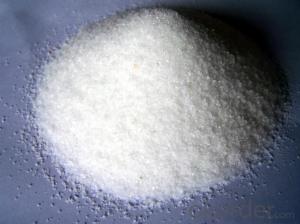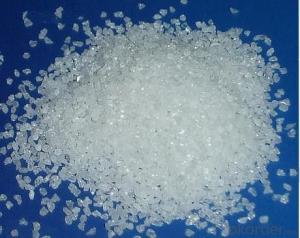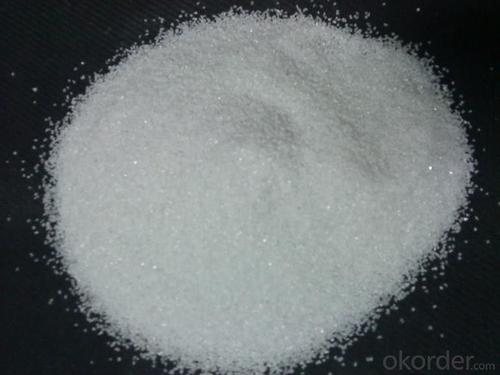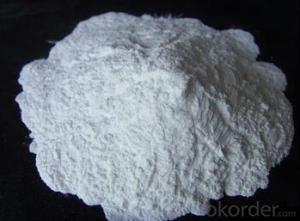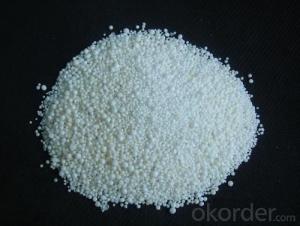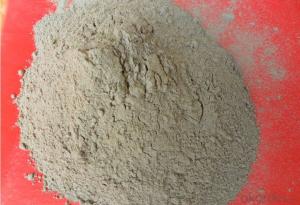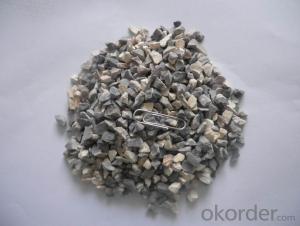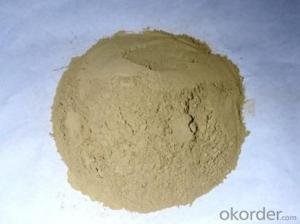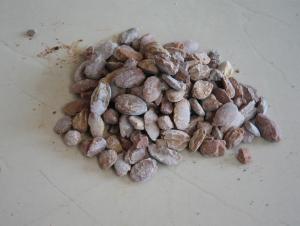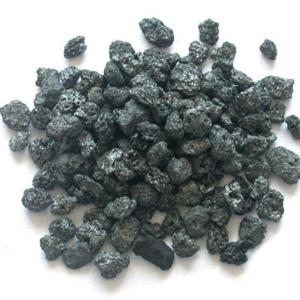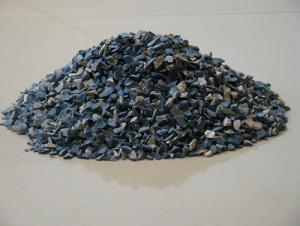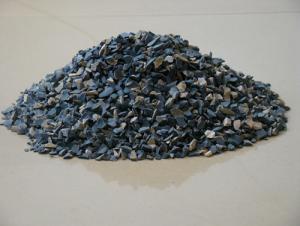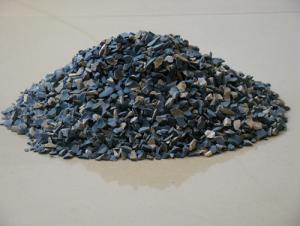Raw Materials for Refractory - Abrasive White Fused Alumina 98.5
- Loading Port:
- Tianjin
- Payment Terms:
- TT OR LC
- Min Order Qty:
- -
- Supply Capability:
- 1000MT m.t./month
OKorder Service Pledge
Quality Product, Order Online Tracking, Timely Delivery
OKorder Financial Service
Credit Rating, Credit Services, Credit Purchasing
You Might Also Like
Specification of Abrasive White Fused Alumina
Item | Chemical Composition | |||
Al2O3 min | NaO2 max | SiO2 max | Fe2O3 max | |
12#-60# | 99.15 | 0.26 | 0.08 | 0.05 |
60#-100# | 99.15 | 0.28 | 0.09 | 0.06 |
120#-150# | 99.1 | 0.29 | 0.10 | 0.08 |
180#-220# | 99.05 | 0.31 | 0.12 | 0.1 |
230#-800# | 98.5 | 0.5 | 0.15 | 0.1 |
1000#-1200# | 98.1 | 0.6% | 0.18 | 0.1 |
Packaging & Shipping
In 1MT jumbo bag or as the buyer request.
We ship the cargo in 20' GP containers,each container loads 25MT/20bags.
Application of white fused alumina
Made of abrasive, suitable for grinding hardened alloy steel, high speed steel. Fine-grained flour is also used for precision casting.
- Q: what's the standard of fireproofing material?
- Class A1 is divided according to the combustion performance of GB8624-2006 building materials and products. Specific technical index requirements are: 1, the temperature rise ≤30 degrees;mass loss rate ≤50%; combustion duration time is 0; 2, main components, overall products, gross calorific value of external secondary components ≤2.0MJ/kg; any inner secondary component ≤1.4MJ/kg; (there are difference between homogeneous and non-homogeneous). Z802 building materials noninflammability testing furnace has to be used for testing technical indicators mentioned in test 1, using Z805 building materials combustion heat value to test technical indicators mentioned in test device 2.
- Q: Do you know the refractories?
- Definition of refractory: inorganic non-metallic material with fire resistance greater than 1580 degrees is refractory.Refractory material is a part of material industry. It is named refractory material for thermal kiln. Refractory materials are divided into conventional refractory materials and special refractory materials, and conventional refractory materials are used in metallurgical furnaces, cement kilns, glass kilns and other thermal furnace lining materials, mostly processed from natural raw materials. Special refractory materials are of high purity, mostly oxide synthetic materials, used in special smelting equipment, or special parts of kilns.
- Q: Who can introduce the difference between galvanized fireproof?coatings and steel structure fireproof materials?
- Steel structure with heat galvanization has a process requirement, which is to spray fireproof coatings. Fireproof coatings have different functions and purposes from galvanized process. When the steel surface derusted, it generally needs to brush rich-zinc primer before spraying fireproof coating. Fireproof coating plan itself includes anticorrosion plan, and fireproof coating is just a layer of coating plans, which is an intermediate layer in general. Fireproof coating plan generally includes primer, fireproof coating and finishing paint. Some fireproof coatings can be directly painted on the bare steel elements without primer and finishing paint.
- Q: Is there any difference between insulating bricks and refractory bricks? Are there any professional refractories factories that are reliable in the quality and quality of these irritated materials?
- High alumina brick, clay brick, brick and other high-quality refractory products, widely used in metallurgy, building materials (cement and glass), non-ferrous metal smelting, petroleum, chemical, electric power, machinery manufacturing and other industries.
- Q: whether the fire resistant level of aerated concrete building blocks can reach the grade one?
- the fire resistant level of aerated concrete building blocks can reach the grade one level. Aerated concrete strength grade shall be divided according to the concrete cubic compressive strength value. Use the symbol C and the cube compressive strength value (in N / mm2 or MPa gauge) to express. According to GB50010-2002 "concrete structure design specifications" provisions, ordinary concrete is divided into fourteen levels, namely: C15, C20, C25, C30, C35, C40, C45, C50, C55, C60, C65, C70, C75, C80 .
- Q: What is the material composition of the new fire-resistant coating?
- New fire-resistant coating generally consists of base material, dispersion media, flame retardants, fillers, additives (plasticizers, stabilizers, waterproofing agents, moisture, etc.). (1) Base material is the basis of the composition of the coating, and it is the main film-forming substance, playing a decisive role in coating performance . For fire-resistant coating, its base material must be capable of matching with the flame retardant to constitute an organic fireproofing system. The base material commonly employed at home and abroad includes inorganic and organic film-forming material. Inorganic film-forming materials include silicate. Si03, K2 Si03Na2 Si03), silica and phosphate [Al. (HPO.). ] ect. There are a wide range of organic film-forming substance, usually flame retardent organic synthetic resins, such as phenolic resins, halogenated alkyd resins, polyester, halogenated olefin resins (such as vinyl chloride resin), amino resin (melamine resin, urea resin, etc. ), tar-based resins, furan resins, heterocyclic resins (e.g., polyamide-imide, polyimide, etc.), organic elements resins (e.g. silicone resin), rubber (halogenated rubber such as chlorinated natural rubber) and so on. There are numerous latex taking water as solvent. www.hc3600.
- Q: What's the classification of refractory material?
- Magnesium aluminum is complex and mainly seeing what classification standard is like according to the appearance shape can be divided into two categories, setting and not setting according to the acid alkali can be divided into acidic, magnesia, high aluminum, ramming expected, spinel, spray coating, plastic, just the quality of the jade, daub material according to the chemical composition is divided into, such as clay, neutral and alkaline according to the operation mode can be divided into different castable, magnesium, calcium, magnesium chrome
- Q: How is the fire endurance of the fireproof paint?
- time is different according to the amount of fireproof paint used. fire resistance time :0.5 hours 1.5 hours 2.0 hours 2.5 hours thickness: 0.45mm 0.9 mm 1.4 mm 2.0 mm 2.8 mm Amount: 0.79kg / m2 1.5 kg / m2 2.3 kg / m2 3.3 kg / m2 4.6 kg / m2
- Q: Who know about the knowledge of acid refractory material? Please explain in detail.
- Refers to the silicon dioxide
- Q: Which fireproofing materials factory is the best in Xiangyang?
- Xiangyang Shenglaide Door Technology Co., Ltd. Location: Taibai Road, Fancheng District, Xiangfan, Hubei Province Xiangyang Ai'ruite Door Technology Co., Ltd. Location: Scientific and Technical Pioneering Park, Xiangcheng District, Xiangfan, Hubei Province Xiangyang Innovation and Ideal Manufacturing Co., Ltd. Location: Xiangyang Xiangfan state Jianshe Road, Xiangzhou District, Xiangyang, Hubei Province
Send your message to us
Raw Materials for Refractory - Abrasive White Fused Alumina 98.5
- Loading Port:
- Tianjin
- Payment Terms:
- TT OR LC
- Min Order Qty:
- -
- Supply Capability:
- 1000MT m.t./month
OKorder Service Pledge
Quality Product, Order Online Tracking, Timely Delivery
OKorder Financial Service
Credit Rating, Credit Services, Credit Purchasing
Similar products
Hot products
Hot Searches
Related keywords

